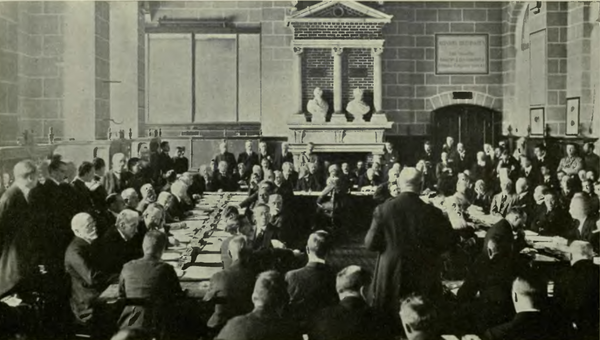The Treaty Of St. Germain
The Treaty of St. Germain was one of a series of treaties signed by the Central Powers after their defeat in World War One. As part of the Treaty of St Germain, Austria had to cede 60 per cent of its territory. The Treaty of Saint Germain was signed on 10 September 1919.

Territory
Czechoslovakia, Yugoslavia, Poland and Hungary were all recognised as independent countries in the Treaty of St. Germain.
Austria lost the Sudetenland in 1919 when the Sudeten people reluctantly accepted the Treaty of Saint-Germain which placed them under Czechoslovak rule. This meant that Czechoslovakia received 3 million German speaking people, who were finally absorbed into Germany with the Munich Agreement in 1938.
Austrian land was also given to Italy, including Trieste, istria and Trentino.
Austria also had to drop its first choice name for its new republic - German Austria as the link to Germany was seen as unacceptable by the Allies.
Military
Austria was treated in a similar way to Germany by the Treaty of Versailles, but the terms were not quite as harsh. The Austrian army was reduced in size to 30,000 men - just enough manpower to defend itself should it face an attack from Communist Russia.
Reparations
Austria, as with the other defeated Central Powers, was required to accept its responsibility for the war and pay reparations.
The St. Germain did set the amount Austria had to pay, although the treaty did order Austria to start payments for 30 years, starting in May 1921. However, Austria did not make a pay a single monetary reparation, although specific payments in animals were set out and Austria was expected to give a certain number of livestock to the allied powers each month.
The Austrian people responded angrily to the Treaty of St Germain, which had reduced the nation to just 32,400 square miles with a population of six million.
See also: The Treaty of Sevres
MLA Citation/Reference
"The Treaty Of St. Germain". HistoryLearning.com. 2025. Web.
